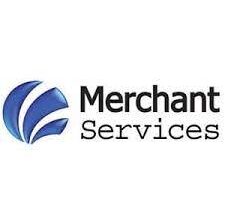Creating Check Stubs Made Easy: A Step-by-Step Guide

In today’s fast-paced world, managing your finances efficiently is crucial. Whether you’re a business owner or an employee, keeping track of your income and expenses is essential for financial stability and peace of mind. One essential tool in this process is the check stub.
In this comprehensive guide, we will walk you through the process of creating check stubs, making it easy for you to manage your finances effectively.
Why Do You Need Check Stubs?
Before we delve into the step-by-step process of creating check stubs, let’s first understand why they are so important.
1. Proof of Income:
Check stubs serve as proof of income, which is often required for various purposes such as applying for loans, renting an apartment, or applying for government benefits. Having accurate and well-documented check stubs can make these processes smoother and more efficient.
2. Tax Compliance:
Check stubs provide a clear record of your earnings and tax withholdings. This information is crucial when filing your taxes, ensuring that you pay the correct amount and avoid potential legal issues.
3. Budgeting and Financial Planning:
A well-organized check stub can help you manage your finances better. It provides a breakdown of your income, deductions, and other financial details, making it easier to budget and plan for the future.
Now that you understand the importance of check stubs, let’s move on to the step-by-step process of creating them.
Step 1: Gather Necessary Information
Before you can create a check stub, you’ll need to collect some essential information. This information includes:
- Your personal details: Name, address, and Social Security number (or employee identification number).
- Your employer’s information: Company name, address, and contact details.
- Earnings: Your gross pay (total earnings before deductions), hourly wage (if applicable), and any additional income sources.
- Deductions: List all deductions, including taxes, insurance premiums, retirement contributions, and any other withholdings.
- Payment method: Whether you are paid by direct deposit or paper check.
- Pay period: Specify the start and end dates of the pay period.
Step 2: Choose a Method
There are several methods you can use to create check stubs:
1. Payroll Software:
If you’re a business owner, using payroll software is one of the most efficient ways to generate check stubs for your employees. Popular payroll software options include QuickBooks, ADP, and Gusto.
2. Online Check Stub Generators:
For individuals or small business owners who don’t want to invest in payroll software, various online check stub generators are available. These tools allow you to input your information and generate professional-looking check stubs instantly.
3. DIY Spreadsheet:
If you prefer a hands-on approach, you can create check stubs using spreadsheet software like Microsoft Excel or Google Sheets. Design a template and input the necessary information for each pay period manually.
Step 3: Input Information
Regardless of the method you choose, you’ll need to input the gathered information accurately. Double-check all details, as errors can lead to financial discrepancies and legal issues. Here’s what to include:
- Employee and employer information.
- Earnings, including regular pay, overtime, and any bonuses or commissions.
- Deductions, such as taxes, insurance, and retirement contributions.
- Net pay (the amount you actually receive after deductions).
Step 4: Calculate Taxes
Calculating taxes can be one of the trickiest parts of creating check stubs. Ensure you understand your tax obligations and consult tax tables or a tax professional to determine the correct withholding amounts.
Step 5: Design the Check Stub
If you’re using spreadsheet software or a DIY approach, design your check stub template to be clear and professional. Include sections for personal details, earnings, deductions, and any additional information specific to your situation.
Step 6: Review and Verify
Before finalizing your check stub, review it carefully to ensure accuracy. Verify that all calculations are correct, and the information is up-to-date. A mistake on your check stub can lead to financial problems, so take the time to check everything thoroughly.
Step 7: Save and Distribute
Once you’re satisfied with your check stub, save it electronically and make printed copies if necessary. If you’re an employer, distribute the check stubs to your employees promptly.
Step 8: Keep Records
It’s essential to maintain a record of your check stubs for your records. For businesses, this is also a legal requirement. Keep digital and physical copies in a secure location for future reference.
Conclusion
Creating check stubs doesn’t have to be a daunting task. With the right information, tools, and attention to detail, you can easily generate accurate and professional check stubs. Whether you’re an employee looking to keep track of your earnings or a business owner ensuring compliance with payroll regulations, following this step-by-step guide will help you create check stubs with ease.



